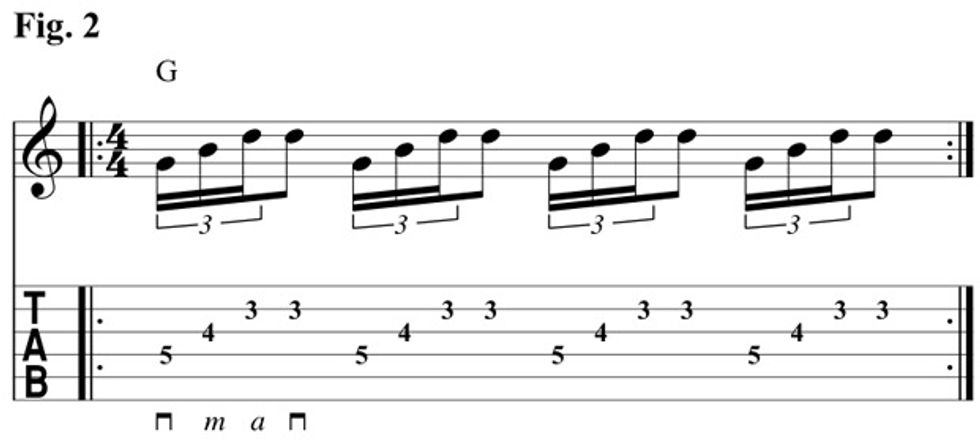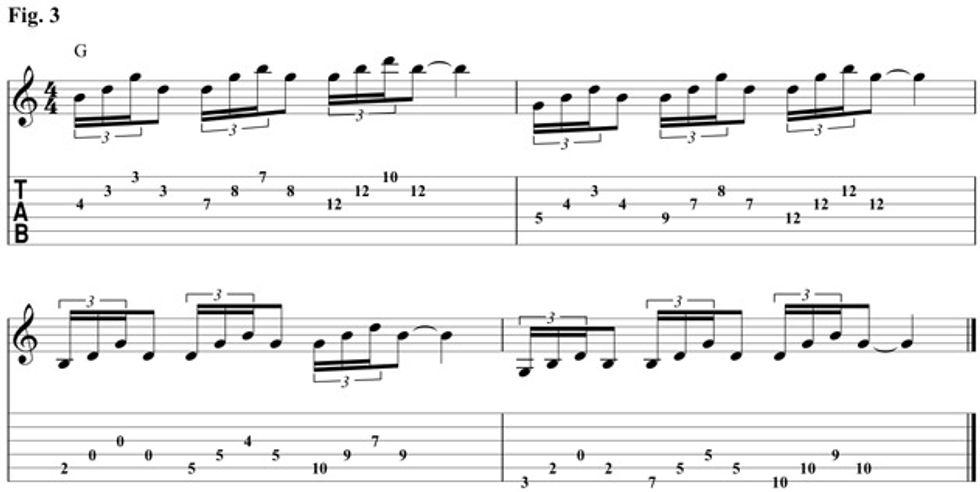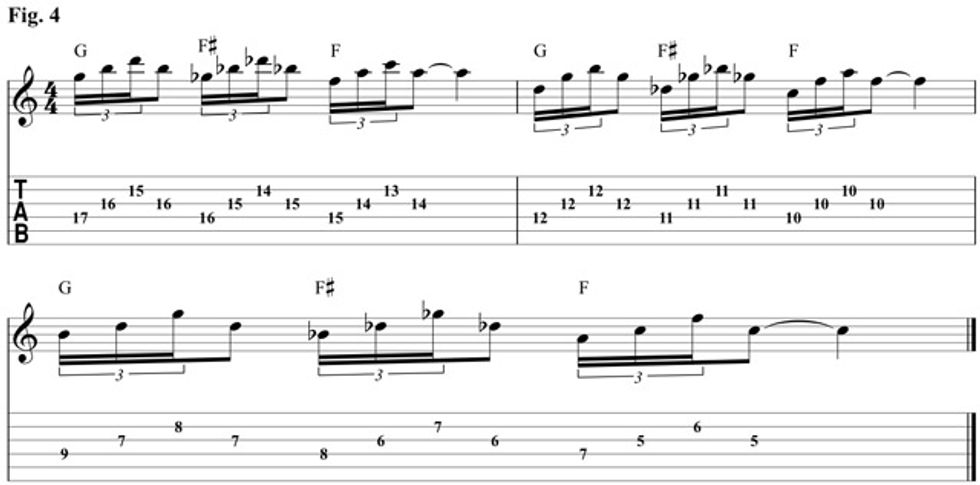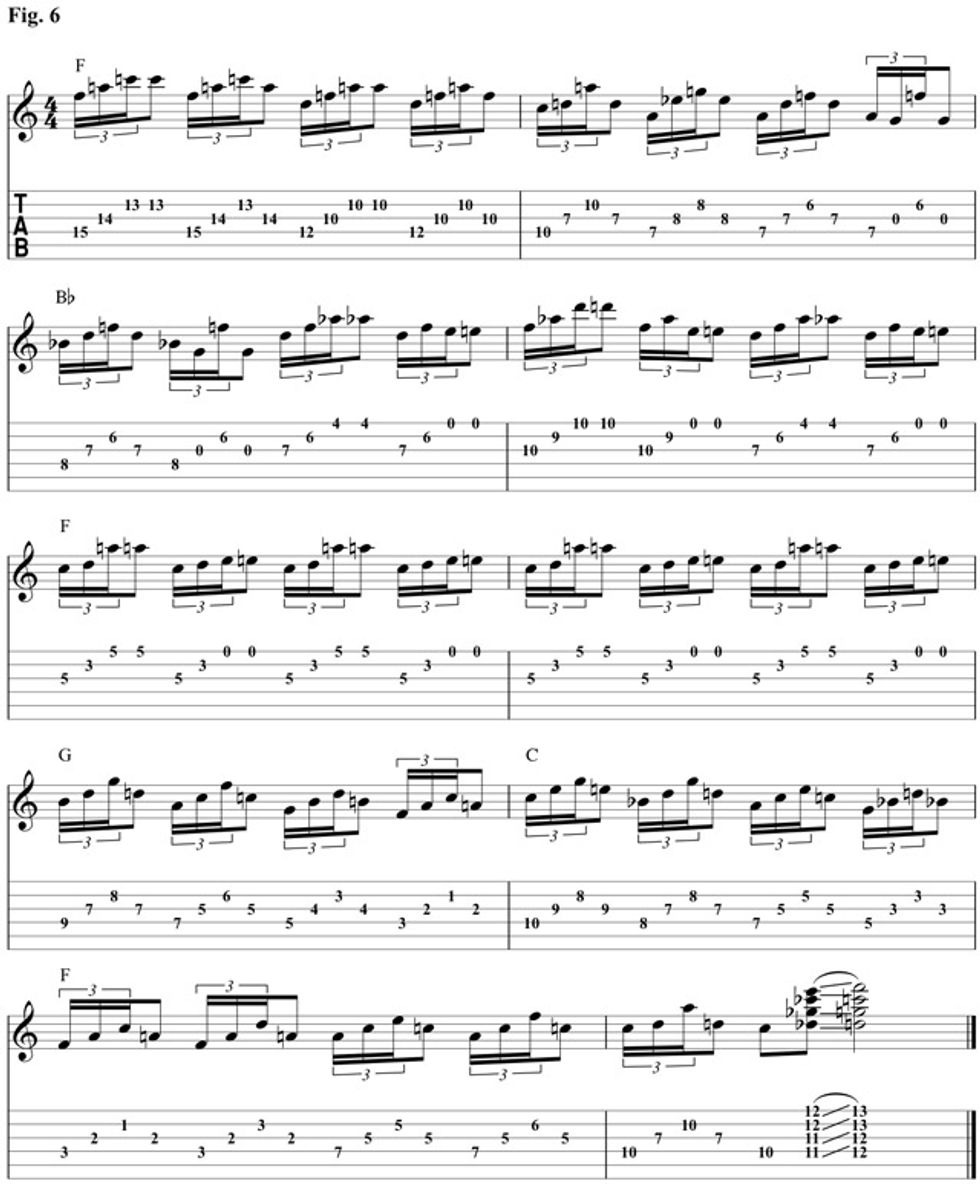Gallop picking is a technique that combines forward rolls with open strings to create a lush sound.
| Chops: Intermediate Theory: Advanced Beginner Lesson Overview: • Create “galloping” licks using forward rolls and open strings. • Develop an understanding of triad shapes all over the fretboard. • Use hybrid picking to play through arpeggios at higher tempos. Click here to download a high-resolution, printable PDF of the notation. |
Gallop picking is a technique that combines forward rolls with open strings to create a lush sound. I first heard this technique used on the bridge of Chet Atkins’ "Galloping on the Guitar.” It's pretty amazing how it immediately draws you in. It's definitely one of those "Whoa, what was that?" tricks. I used it for a section following my solo on "She's Something Sweet,” from my latest album Peach Crate. Here's the good part—it's not that hard to do. We will have to brush up on our triad inversions though, if we want to use it with any kind of proficiency. This lesson will start with some simple examples to get you comfortable with galloping and using inversions. Then we will look at a short piece that will hopefully give you some inspiration to start incorporating galloping into tunes and solos.
Let’s start with the technique. In Fig. 1 I’m going to start with a root position G major triad (G–B–D) based of the 4th string. We'll do a forward roll through the triad. A forward roll is a way of playing a series of notes across a string set with hybrid picking. I start by picking the fourth string followed by the middle finger plucking the third string and then the ring finger plucks the second string. If you haven't done this before then take some time to repeat it and build up some strength and speed. As it gets faster you'll start to notice the rolling effect. Start the lick off by doing this forward roll as a sixteenth-note triplet. The last thing to do is add a single note on the upbeat. After the triplet I'm picking the middle note of my triad on the third string. Put this together and you'll get the galloping effect. You could also try rolling forward and picking the high note of the triad on the second string. You can hear this in Fig. 2.
or download example audio
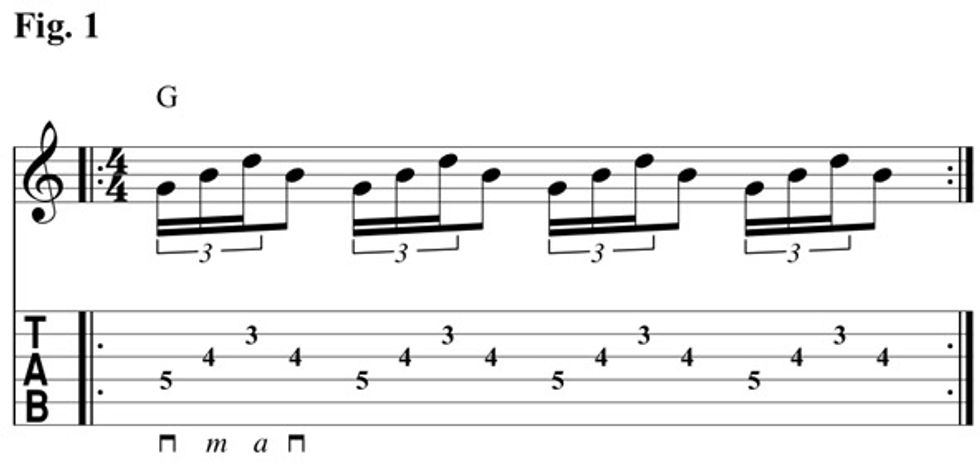
We move the triads around in Fig. 3. I'm going to break up the guitar into three string sets (3–2–1, 4–3–2, 5–4–3, 6–5–4) and move through the different inversions of a G major triad. In each measure we will start with the lowest inversion and move up the neck. You might find it helpful to first play the triad shapes up and down the neck and then add the gallop picking in the right hand only when you're comfortable.
In Fig. 4 we're moving each triad shape down chromatically a whole step. This will turn it into the shape of an F major triad. When you walk each triad down you will end up with some combination of F–A–C. If you're still playing over a G chord these notes will now be sounding as the b7th, 9th and 11th, which could give you a G9sus sound. Try doing this exercise on each set of three strings and in at least three other keys.
Open up and say extensions! In Fig. 5 we're adding an extension to each triad in the laziest way. What's simpler than just lifting a finger? I'm using a Bb major triad based on the 4th string. I start with all fingers down and do my forward roll. Then lift your middle finger off of the third string and play the open 3rd string on the upbeat. Make sure your first and third fingers are still down. You want all of these notes to ring into each other. The open G is acting as a 6th within the Bb. Now lets switch the shape to an F7. Do a forward roll through the triad and play the open 3rd string again on the upbeat, which allows the 9th (G) to ring.
We put everything together in Fig. 6. Hopefully this will inspire you to write your own. Good luck!
 Jason Loughlin is a Brooklyn based guitarist, producer, educator, composer and founder of Big Pop Records. His creative guitar playing has supported artists such as Amos Lee, Rachael Yamagata, James Burton and Lesley Gore. His new record Peach Crate is now available everywhere. His new Truefire instructional DVD 50 Rockabilly Licks You Must Know will be out in the fall. For all other info check his website jasonloughlin.com
Jason Loughlin is a Brooklyn based guitarist, producer, educator, composer and founder of Big Pop Records. His creative guitar playing has supported artists such as Amos Lee, Rachael Yamagata, James Burton and Lesley Gore. His new record Peach Crate is now available everywhere. His new Truefire instructional DVD 50 Rockabilly Licks You Must Know will be out in the fall. For all other info check his website jasonloughlin.com